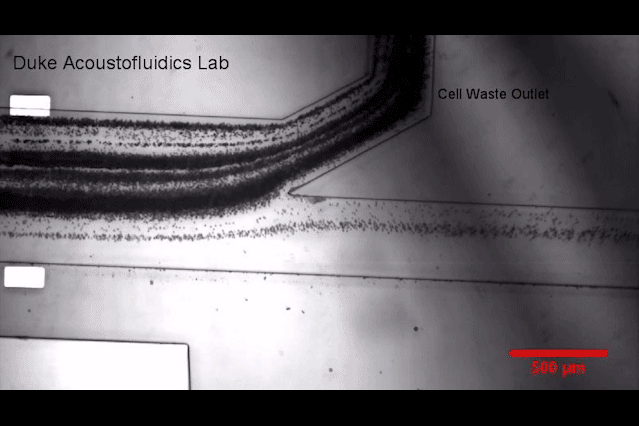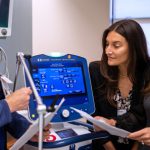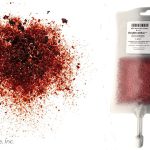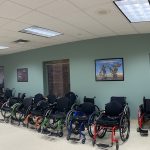
Scientists at the world’s top universities have collaborated to develop a device that, by sifting tiny particles from blood samples, could be a boon to both scientific research and medical applications by allowing researchers to study hard-to-reach tissues — such as the human placenta — through a blood sample.
Combining acoustic and microfluidic technologies, the scientists from the Magee-Womens Research Institute (MWRI) at the University of Pittsburgh, Duke University, Massachusetts Institute of Technology (MIT), Carnegie Mellon University (CMU) and Nanyang Technological University in Singapore, developed the prototype, which is designed to be used at the patient point-of-care.
It sifts blood nanoparticles, called exosomes, which are released from every cell type in the body and which are thought to play a large role in cell-to-cell communication and disease transmission. Exosomes have been researched since their discovery three decades ago, and because they contain biomolecules that reflect their tissue of origin, they open the door to sophisticated diagnostic testing of tissues previously out of reach.
In a paper published in the Proceedings of the National Academy of Sciences USA, the researchers demonstrated a better method based on acoustofluidics — the fusion of acoustics and microfluidics. The prototype provides a gentle, automated, point-of-care system that allows a single-step, on-chip isolation of exosomes from whole biological fluids with a high rate of purity and yield.
Casual Meeting Turns into Scientific Pursuit
The idea for the research that led up to this prototype device originated in a casual meeting at a conference in Washington, D.C., in 2014 between Drs. Yoel Sadovsky, executive director of MWRI, and Subra Suresh, then president of CMU. Suresh had been working with Drs. Tony Jun Huang, then professor of bioengineering science and mechanics at Pennsylvania State University, and Ming Dao, director of the nanomechanics laboratory at MIT, to isolate tumor cells from the blood to enhance cancer diagnostics.
A conversation between the two Pittsburgh researchers about how exosomes could be used as a window into tissue health turned into an intense scientific pursuit, with the idea of scaling down the assays already engineered by Huang, Suresh and Dao. The results, representing the engineering development lead by Huang and colleagues with additional testing in Sadovsky’s lab at MWRI, could help researchers and clinicians learn more about exosomes and form the foundation for diagnostic or therapeutic devices.
Tissue injury, cancer and other diseases in relatively inaccessible organs — such as the placenta, brain, kidney and liver — could, in theory, be diagnosed and monitored through a simple blood draw, dubbed a “liquid biopsy.”








